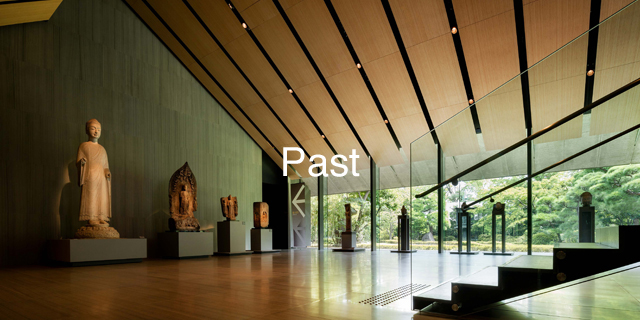
-
Museum Collection Exhibition
Japanese Narrative Paintings
- Saturday, July 15 – Sunday, August 20, 2023
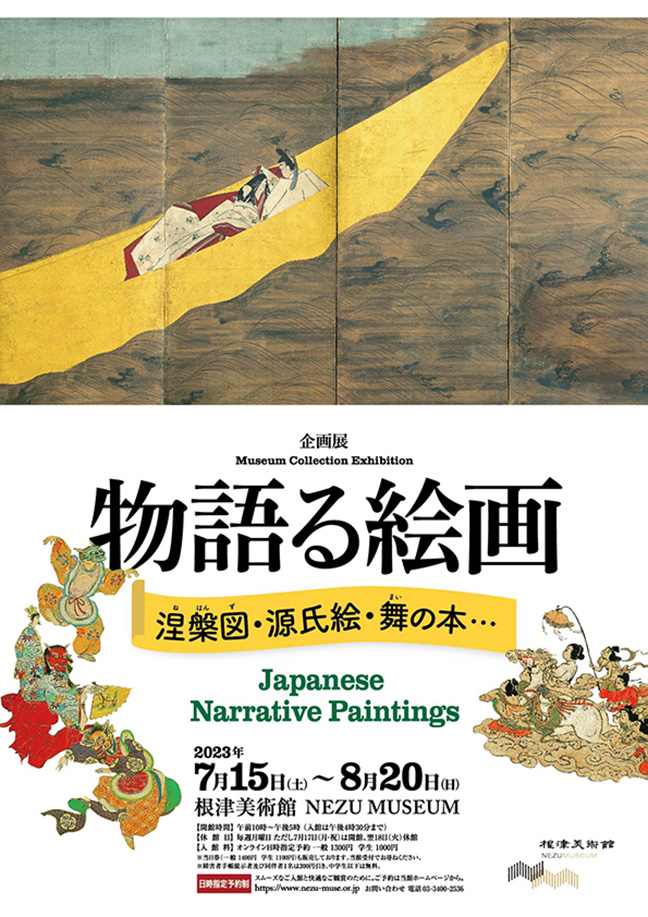

| Closed | Mondays except July 17, and closed on July 18 |
|---|---|
| Hours | 10 a.m. - 5 p.m.(last entry: 4:30 p.m.) |
| General admission | Adult 1300 yen, Student 1000 yen |
| Gallery | 1/2 |
Narratives that earned great popularity, such as the novel The Tale of Genji and the military epic The Tale of the Heike, began becoming the subject of narrative paintings almost as soon as they had gained fame. These pictorial versions included illustrated books, picture scrolls and albums of paintings, both with texts. They also developed into paintings without text, including hanging scrolls and folding screen paintings and other large-format works. These paintings included works that combined multiple scenes from the text or that took one specific scene as the subject, in a great variety of formats.
This exhibition expands the scope of the narrative to include Buddhist tales, Noh plays, Kōwakamai recitative dance, and otogi-zōshi, popular tales. While savoring these pictorial versions of many tales, please note what sorts of scenes from narratives fascinated people long ago.
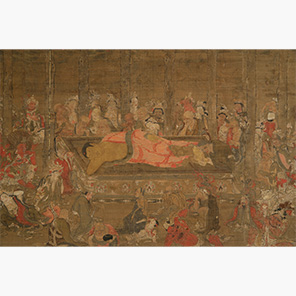

-
Butsu Nehan-zu (Nirvāņa of Śakyamuni)
By Gyōyū and Senyū - Hanging scroll; ink and color on silk
- Japan Nanbokuchō period, dated 1345
Nezu Museum - Nirvāņa of Śakyamuni depicts the death of Śakyamuni, the historical Buddha, beside the Baddaiga River, in Kuśinagara, India. Śakyamuni’s mother, Maya, races down from the sky, while his disciples, laymen, and animals express their grief. The inscription in sumi ink on this criterion work’s roller establishes the date of production and the identity of the painter.
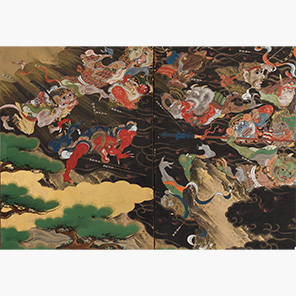
-
Extermination of Monsters
Attributed to Iwasa Matabei - Eight-panel screen; ink and color on gold-foiled paper
-
Japan Edo period, 17th century
Private collection - This screen painting has recently been identified as the scene in which Tamuramaru (Sakanoue no Tamuramaro) exterminates the monsters, as told in the Noh play Tamura. The vast number of arrows raining down on the monsters have been released by the hands of the Thousand-Armed Kannon, who has appeared above the white banner. Kannon’s presence is indicated by the rays of light in gold pigment.
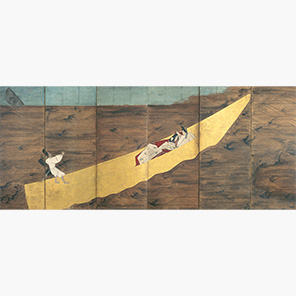
- “Ukifune” Chapter from The Tale of Genji
- Six-panel screen; ink and color on paper
-
Japan Edo period, 17th century
Nezu Museum - In this chapter of The Tale of Genji, Niō-no-Miya brings his beloved Ukifune out of a mountain cottage in Uji, and they cross the Uji River to his villa on the other side. The unstable composition of this painting, with the boat at a steep angle, symbolizes the fate awaiting Ukifune.
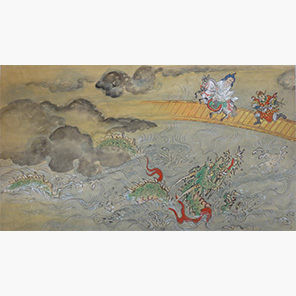
- Detached Segments of Mai no Hon (Choryo)
- Detached segments; ink and color on paper
-
Japan Edo period, 17th century
Nezu Museum - This book added pictures to the scripts for Kōwakamai, a type of recitative dance performed to the accompaniment of a hand drum. It was originally made as one set containing forty-two illustrated dance scripts, but the binding has been removed and the pages separated; those that contained only text have been lost. These paintings, which include illustrations of dances that have seldom been depicted, are quite rare and valuable. They are being exhibited for the first time.
